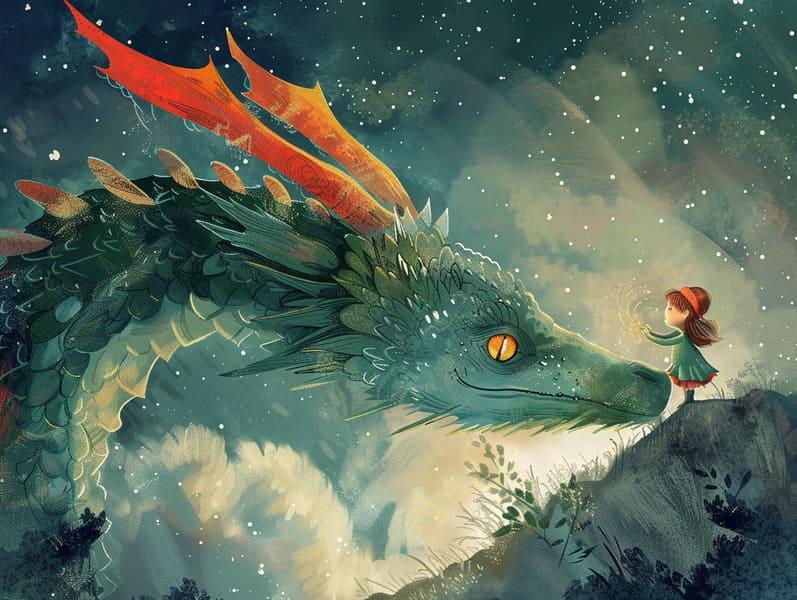The Origins of Old Fairy Tales with Their Persistent Delight.
The Origins of Old Fairy Tales with Their Persistent Delight.
Blog Article

Best fairy tales have legendary status. These narratives have been whispered from one generation to the next well before they were ever published. They arose from a variety of societies, including Western traditions. They were initially narrated among adults, often carrying themes and messages reflective of the societal norms and beliefs of the time.
The Grimm brothers, the two Grimm brothers, were among the first to collect and release many of these beloved tales. Their compilation, "Grimm's Fables," included narratives like "Cinderella," "The Story of Hansel and Gretel," and "Snow White," which have since become cornerstones in the world of classic fairy tales. Similarly, Hans Christian Andersen's enchanting fairy tales, such as "The Sea Maid," and "The Story of the Ugly Duckling," have touched hearts worldwide, establishing their place in the pantheon of classic fairy tales.
Despite their historical roots, classic fairy tales remain as meaningful as ever, especially as children's night stories. These fantastical tales are now available in multiple formats, including gorgeously illustrated books, captivating animations, and online storybooks.
Their continued relevance can be ascribed to several whimsical characteristics:
Crucial Morals: Old fairy tales often provide important moral lessons. Fairy tales like "The Boy Who Cried Wolf" teach the virtue of being truthful, while "The Hare and the Tortoise" emphasize the values of steadfastness and unpretentiousness. These stories offer young readers clear distinctions between good and bad, molding their moral compass in a gentle yet deep way.
Compassion and Insight: Traditional fairy tales frequently feature individuals facing challenges and struggles, motivating readers to comprehend with their struggles and cheer for their triumphs. For instance, "Beauty and the Beast" teaches us the value of seeing beyond looks to comprehend the true nature of a person, fostering insight and insight.
Cultural Recognition: Many classic fairy tales are saturated in the cultural contexts from which they blossomed. Learning from these tales can provide informative snapshots into different backgrounds, building a sense of cultural insight and discernment.
Fantasy and Innovation: The fantasy-filled elements in ancient fairy tales—wizardry and magic—unleash children’s imaginative ideas. These fairy tales guide readers to fantastical realms, motivating inventive ideas and a sense of magic that continues a lifetime.
Ancient fairy tales are not only magical but also enlightening. They work as alluring tools in advancing various cognitive and affective skills in young ones. When ancient fairy tales are spoken out loud, they enhance verbal development by bringing new word meanings and intricate sentence structures. This practice also strengthens listening skills and attentiveness, as young readers stay focused, anticipating to see what happens next.
Furthermore, talking about the themes and characters of ancient fairy tales can cultivate reasoning skills and intellectual skills. The young learn to notice patterns, guess what will happen, and understand cause and effect. These analyses also contribute to children express their thoughts and feelings, promoting their emotional intelligence.
In today’s digital age, the proliferation of internet fairy tales has made these fairy tales more within reach than ever. Internet sites and online apps present large libraries of old fairy tales that can be enjoyed or heard anytime, anywhere. Fairy tales told out loud are particularly liked, offering an captivating way for little ones to appreciate these enchanting tales. Audiobooks and read-aloud videos bring characters and settings to life, often augmented by delightful harmonies and music that augment the tale experience.
The lasting allure of timeless fairy tales lies in their ability to transform to modern society while sustaining their main lessons. Contemporary renditions of these stories often spotlight more diverse characters and modern settings, making them accessible to today’s audience. However, the key lessons of fearlessness, compassion, and fairness remain unchanged, continuing to connect with kids of all ages.
Timeless fairy tales also offer a sense of reassurance and familiarity. They grant access to a coherent narrative with a clear beginning, middle, and end, often wrapping up with the closure of conflicts website and the triumph of righteousness over wickedness. This certainty can be easing for little ones, affording a sense of assuredness in an variable world.
Old fairy tales continue to delight and inform new generations, maintaining their mystique and pertinence in modern society. As kids' bedtime tales, they share a perfect blend of wonder and wisdom, promoting moral values, empathy, and creativity. The presence of digital fairy tales and the widespread nature of fairy tales read aloud affirm that these timeless tales remain accessible to new generations.
By keeping and releasing these fairy tales, we continue to revere the rich tapestry of narrative artistry and cultural heritage. Whether you are delving into a vibrantly illustrated book, delving into a virtual collection, or listening on an audiobook, the majesty of timeless fairy tales is always within reach. These tales illustrate of the unchanging strength of narratives and its ability to unify us across time and space.
Whether you are accessing a richly illustrated book, delving into a internet collection, or listening through an voice book, the attraction of ancient fairy tales is always within reach.
These tales show us of the endless spell of stories and its ability to gather us across epochs and places, casting a charm that charms and informs alike.